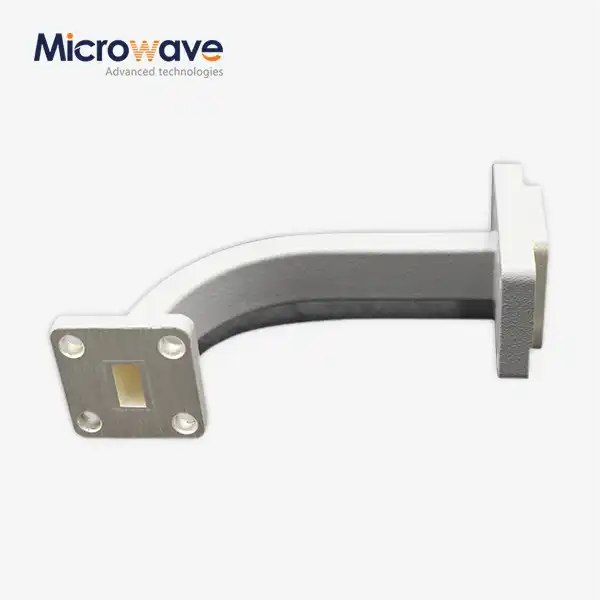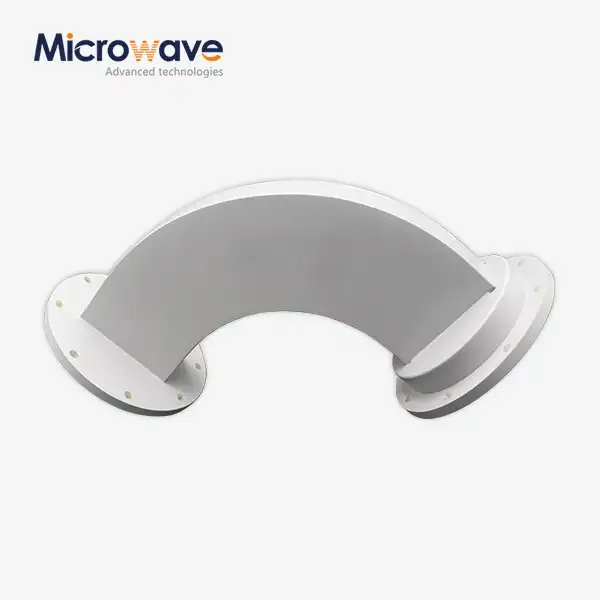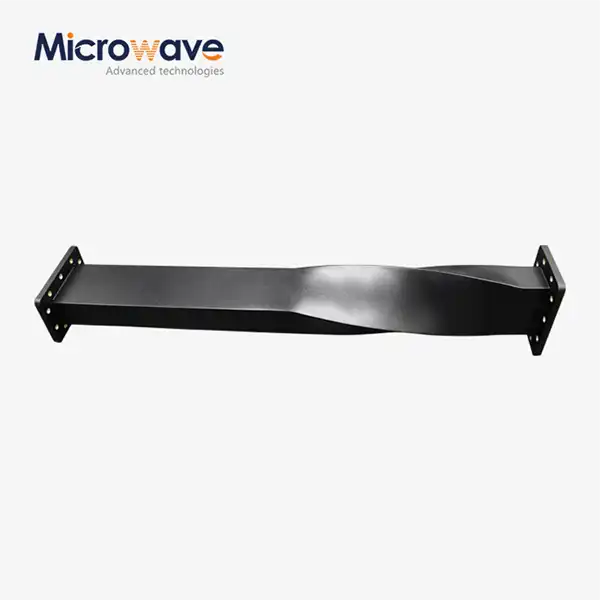What are the common materials used to make waveguide tubes?
Waveguide tubes are essential components in microwave and radio frequency (RF) systems, designed to efficiently transmit electromagnetic waves with minimal signal loss. The selection of appropriate materials for waveguide tube construction is crucial for ensuring optimal performance across various applications. Waveguide tubes are manufactured using specific materials that offer properties such as high conductivity, thermal stability, and mechanical strength. This article explores the common materials used in waveguide tube manufacturing and their distinctive characteristics, helping you make informed decisions when selecting the right waveguide components for your microwave communication systems.
Material Selection Criteria for Waveguide Tubes
Electrical Conductivity Requirements
The electrical conductivity of materials used in Waveguide Tube construction is paramount for efficient signal transmission. Materials with high electrical conductivity minimize resistive losses that can degrade signal quality and reduce the overall efficiency of the waveguide system. Copper stands out as an exceptional choice for waveguide tubes due to its superior electrical conductivity value of approximately 5.96 × 10^7 siemens per meter at room temperature. This outstanding conductivity allows electromagnetic waves to propagate through the waveguide with minimal attenuation, particularly crucial for applications requiring high-frequency transmission where signal integrity is essential. Silver provides even better conductivity than copper (approximately 6.30 × 10^7 siemens per meter), making it ideal for specialized applications where maximum performance is required regardless of cost considerations. Aluminum, while having lower conductivity (approximately 3.77 × 10^7 siemens per meter) compared to copper, still offers sufficient performance for many applications. Advanced Microwave Technologies Co., Ltd. utilizes these high-conductivity materials in their Waveguide Tube offerings, ensuring that customers receive components that maintain signal integrity across the supported frequency ranges from WR2300 to WR10. The selection of a particular conductive material for a Waveguide Tube must consider the specific frequency requirements, as the skin effect becomes more pronounced at higher frequencies, potentially affecting the waveguide's performance characteristics and necessitating materials with superior surface conductivity properties.
Thermal Stability Considerations
Thermal stability represents a critical factor in Waveguide Tube material selection, particularly for applications involving high power transmission or operation in fluctuating temperature environments. Materials must maintain their dimensional stability and electrical properties across a wide temperature range to ensure consistent waveguide performance. Copper, with its melting point of 1,084°C and excellent thermal conductivity of approximately 401 W/(m·K), provides exceptional heat dissipation capabilities, making it suitable for high-power applications where Waveguide Tubes might experience significant thermal stress. This thermal stability prevents deformation that could alter the waveguide's internal dimensions and consequently affect its transmission characteristics. Aluminum waveguides, with a melting point of 660°C and thermal conductivity of about 237 W/(m·K), offer good thermal performance for standard applications while providing weight advantages. For extreme temperature environments, specialized alloys like copper-silver or copper-beryllium may be incorporated into Waveguide Tube designs to enhance thermal stability while maintaining necessary electrical properties. Advanced Microwave Technologies Co., Ltd. offers Waveguide Tubes in various materials including aluminum and copper, allowing customers to select the appropriate option based on their specific thermal requirements. The company's waveguides, available in standard, thin-wall, and thick-wall configurations, can be customized to meet specific thermal challenges in satellite communications, defense applications, and telecommunications infrastructure where temperature variations might otherwise compromise signal integrity. Proper material selection ensures that the Waveguide Tube maintains its critical dimensions and electrical characteristics even under thermal expansion and contraction cycles, ultimately contributing to the system's overall reliability and longevity.
Mechanical Durability Factors
The mechanical durability of Waveguide Tube materials significantly impacts their longevity and performance reliability, particularly in demanding environments such as aerospace, defense, and outdoor telecommunications installations. Materials must possess sufficient tensile strength, hardness, and resistance to deformation to maintain the precise internal dimensions that are critical for proper waveguide operation. Aluminum, with its excellent strength-to-weight ratio, provides an advantageous balance of mechanical properties for Waveguide Tubes installed in weight-sensitive applications. Though softer than some alternatives with a Mohs hardness of approximately 2.5-3, properly designed aluminum waveguides with appropriate wall thickness can deliver reliable performance while reducing overall system weight. Copper waveguides offer superior mechanical stability with a Mohs hardness of around 3, making them resistant to denting and deformation that could otherwise create signal reflections and transmission losses within the Waveguide Tube. For applications requiring enhanced durability, Advanced Microwave Technologies Co., Ltd. offers heavy-wall thickness options in their Waveguide Tube product line, particularly beneficial for installations subject to physical stress or vibration. The company's experience spanning over 20 years in microwave product manufacturing ensures that their waveguides meet rigorous durability standards while maintaining precise dimensional tolerances essential for optimal signal propagation. Their Waveguide Tubes undergo careful manufacturing processes to maintain internal surface smoothness, as surface irregularities can increase signal loss and reflection. This attention to mechanical detail is particularly important at higher frequencies where wavelengths become shorter and more susceptible to disruption from even minor surface imperfections. The ISO 9001:2008 certification and RoHS compliance of their Waveguide Tube products further validate the quality and reliability of the materials and manufacturing processes employed in their construction.
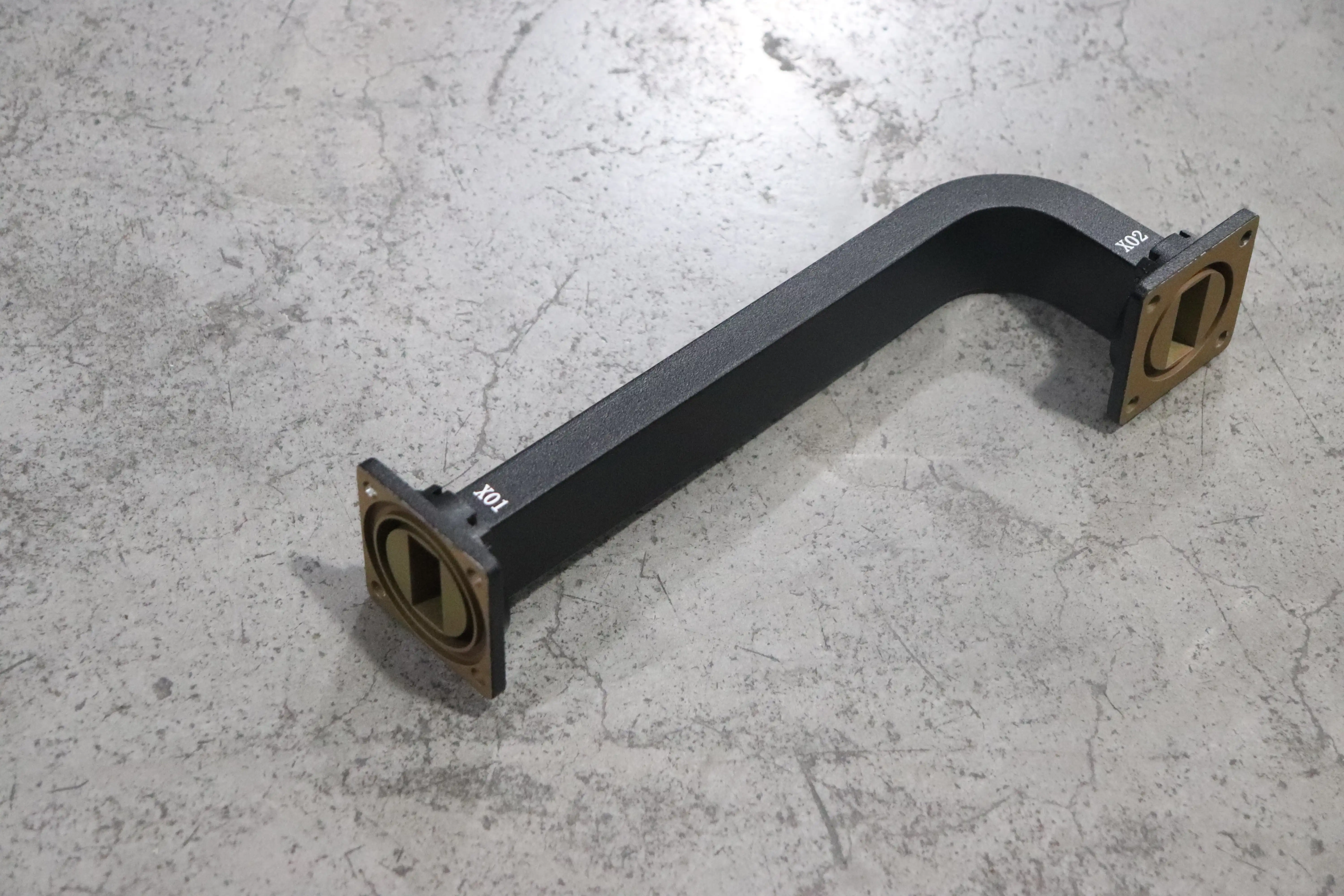
Primary Waveguide Tube Materials
Aluminum Waveguide Properties
Aluminum has established itself as one of the most widely used materials for Waveguide Tube construction across numerous applications due to its exceptional combination of desirable properties. With a density of approximately 2.7 g/cm³—roughly one-third that of copper—aluminum waveguides offer substantial weight savings that prove invaluable in aerospace, satellite, and portable communication systems where every gram matters. This lightweight characteristic doesn't significantly compromise performance, as aluminum still provides approximately 61% of the conductivity of copper, making it highly efficient for most commercial and many military Waveguide Tube applications. Advanced Microwave Technologies Co., Ltd. leverages these properties in their aluminum Waveguide Tube offerings, which support sizes from WR2300 to WR10, covering an extensive frequency range suitable for diverse applications. The natural formation of aluminum oxide on the surface provides an additional advantage by creating a protective layer that prevents further corrosion, enhancing the longevity of aluminum waveguides in various environmental conditions. This self-passivating property makes aluminum Waveguide Tubes particularly suitable for outdoor installations or marine environments where exposure to moisture and corrosive elements is inevitable. The material's excellent machinability allows for precise manufacturing with tight tolerances, ensuring consistent electrical performance across production batches. Advanced Microwave's aluminum waveguides maintain dimensional accuracy even with complex geometries, supporting various flange types and specialized configurations. Additionally, aluminum's lower cost compared to copper or silver makes it an economically viable option for large-scale deployments or projects with budget constraints, without severely compromising the Waveguide Tube's essential transmission capabilities. The thermal expansion coefficient of aluminum (approximately 23.1 × 10^-6 per °C) must be considered during system design, particularly for applications experiencing significant temperature fluctuations, as dimensional changes can affect the operating frequency characteristics of the Waveguide Tube.
Copper Waveguide Advantages
Copper waveguides represent the gold standard in Waveguide Tube performance, offering unparalleled electrical and thermal properties that make them indispensable for high-frequency and high-power applications. With an electrical conductivity approximately 63% higher than aluminum, copper Waveguide Tubes minimize insertion loss and maximize power handling capabilities—critical factors in radar systems, satellite communications, and high-energy physics research facilities. This superior conductivity becomes increasingly significant as frequencies increase, with copper waveguides demonstrating markedly better performance above 18 GHz where transmission losses become more pronounced. Advanced Microwave Technologies Co., Ltd. manufactures premium copper Waveguide Tubes to exacting standards, ensuring optimal signal integrity across their supported frequency ranges. Their copper waveguides excel in applications requiring minimal signal distortion and maximum power transmission efficiency. The excellent shielding effectiveness of copper Waveguide Tubes provides superior electromagnetic interference (EMI) protection, a crucial characteristic in densely packed electronic environments or sensitive instrumentation applications where signal isolation is paramount. The material's naturally high electromagnetic reflectivity ensures that signals remain contained within the waveguide path with minimal leakage, maintaining system integrity and compliance with regulatory requirements. Copper's exceptional thermal conductivity—approximately 401 W/(m·K) versus aluminum's 237 W/(m·K)—enables copper Waveguide Tubes to dissipate heat more effectively during high-power operation, preventing performance degradation due to thermal effects and extending component lifespan in demanding applications. This thermal advantage proves particularly valuable in continuous wave (CW) high-power transmission systems where sustained heat management is essential. Advanced Microwave's copper waveguides can be manufactured with standard, thin, or heavy wall thicknesses depending on specific application requirements, with lengths available up to 3 meters to accommodate various system configurations. The superior solderability of copper facilitates more reliable connections and joints in complex waveguide assemblies, ensuring consistent electrical performance across connection points that might otherwise introduce discontinuities and return loss in the transmission path.
Silver-Plated Waveguide Applications
Silver-plated waveguides represent a premium solution in the Waveguide Tube market, offering enhanced performance characteristics that make them ideal for specialized high-frequency and low-loss applications. These waveguides typically consist of a base material—often copper or aluminum—coated with a thin layer of silver that ranges from 2 to 10 microns in thickness. This silver plating provides the Waveguide Tube with superior electrical conductivity, approximately 6% higher than pure copper, resulting in notably reduced insertion loss at frequencies above 30 GHz where signal attenuation becomes increasingly problematic. The skin effect, where RF current flows primarily along the conductor's surface, makes silver plating particularly effective since only the surface material significantly impacts the waveguide's electrical performance. Advanced Microwave Technologies Co., Ltd. offers silver-plated options within their Waveguide Tube portfolio for applications demanding the absolute highest performance standards, such as millimeter-wave systems, advanced radar installations, and cutting-edge research equipment operating at frequencies approaching 110 GHz. Silver-plated waveguides excel in critical aerospace and defense applications where signal integrity directly impacts system effectiveness and reliability. Satellite communication systems particularly benefit from silver-plated Waveguide Tubes, as the reduced transmission losses translate into improved link budgets and communication reliability over long distances. The material's superior performance in space environments, where repair or replacement is impossible, justifies the additional investment in silver-plated components. Additionally, silver's excellent resistance to oxidation under controlled environmental conditions helps maintain consistent electrical performance over time. While silver can tarnish when exposed to sulfur compounds in the atmosphere, proper protective measures during manufacturing and installation ensure long-term reliability of silver-plated Waveguide Tubes. For specialized applications in research facilities and testing laboratories, where precise measurements and minimal signal distortion are essential, silver-plated waveguides provide the highest signal fidelity available in commercially produced Waveguide Tube products. Advanced Microwave's commitment to high-quality manufacturing processes ensures their silver-plated waveguides maintain consistent plating thickness and surface finish, factors critical to achieving the expected performance advantages in these demanding applications.
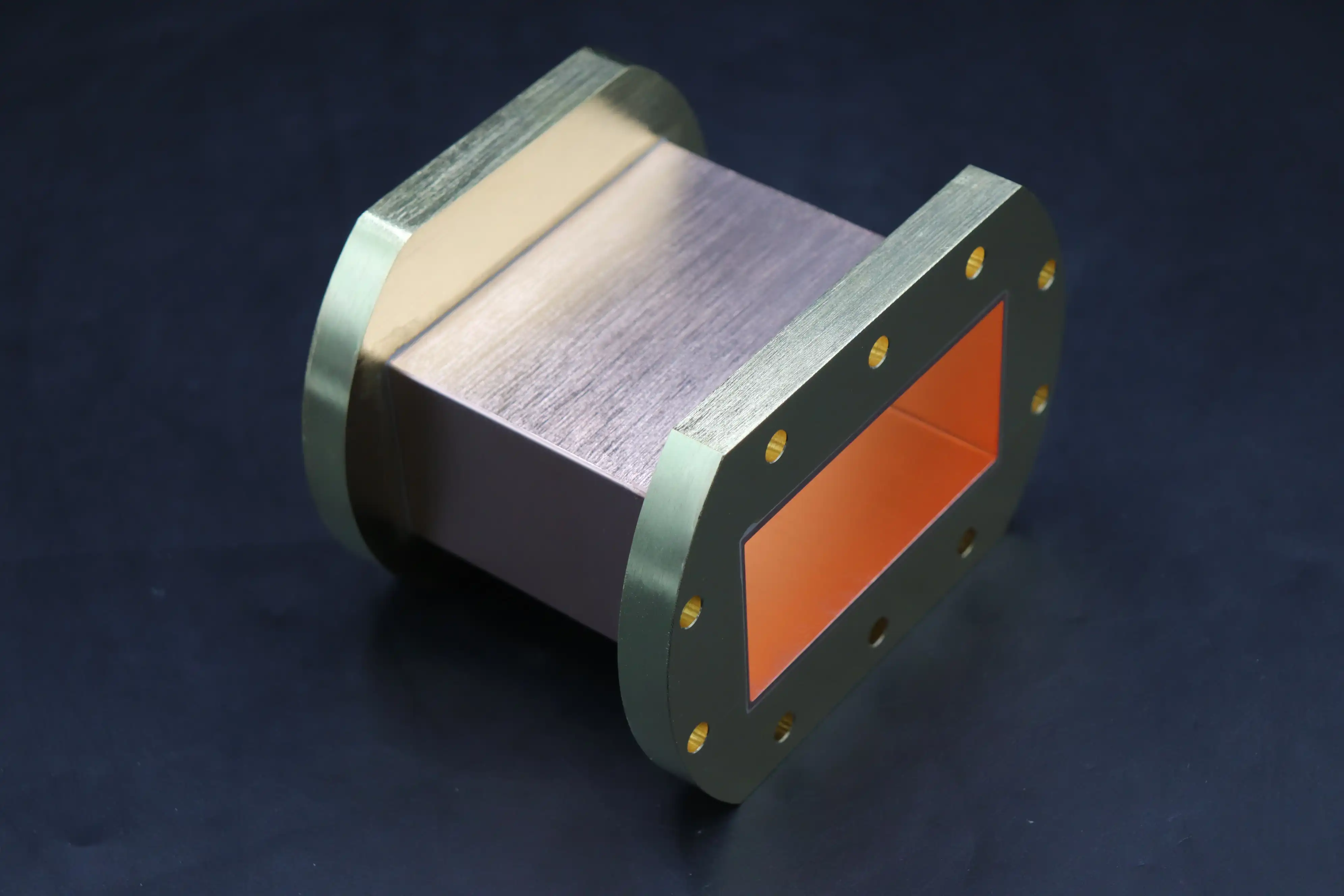
Specialized Waveguide Materials
Brass and Bronze Waveguides
Brass and bronze waveguides occupy an important niche in the Waveguide Tube market, offering distinctive properties that make them valuable for specific applications despite being less commonly used than aluminum or copper. Brass, an alloy primarily composed of copper and zinc (typically in proportions of 60-70% copper and 30-40% zinc), provides a compelling combination of moderate electrical conductivity—approximately 15-45% that of pure copper depending on the specific alloy composition—and excellent machinability. This makes brass Waveguide Tubes particularly suitable for complex geometries and intricate components where manufacturing precision is paramount. The material's natural resistance to corrosion, superior to that of copper alone, enhances the longevity of brass waveguides in humid or marine environments. Advanced Microwave Technologies Co., Ltd. leverages these properties to manufacture specialized brass Waveguide Tube components for applications where the balance between performance and manufacturability is critical.
Bronze waveguides, composed primarily of copper with additions of tin, aluminum, or other elements, offer enhanced mechanical strength compared to pure copper while maintaining approximately 10-20% of copper's electrical conductivity. This strength makes bronze Waveguide Tubes particularly valuable in rugged environments or applications subject to mechanical stress and vibration. The inherent hardness of bronze, with some formulations achieving Brinell hardness values between 40 and 420 depending on exact composition and treatment, provides exceptional wear resistance and dimensional stability over time. For specialized military applications or industrial environments where Waveguide Tubes must withstand harsh conditions while maintaining acceptable electrical performance, bronze offers an excellent compromise between durability and signal transmission capability. The thermal expansion coefficients of brass (approximately 19-21 × 10^-6 per °C) and bronze (approximately 16-18 × 10^-6 per °C) are generally lower than that of aluminum, providing better dimensional stability across temperature fluctuations. This property makes these alloy-based Waveguide Tubes valuable in systems that experience significant thermal cycling. While not offering the premium electrical performance of copper or silver, these specialized alloy waveguides fill important application niches where mechanical properties and environmental resilience take precedence over achieving the absolute lowest insertion loss.
Dielectric-Filled Waveguides
Dielectric-filled waveguides represent an innovative specialized category of Waveguide Tube technology that incorporates non-conductive materials within the waveguide structure to modify its transmission characteristics. By partially or completely filling a metallic waveguide with carefully selected dielectric materials—such as polytetrafluoroethylene (PTFE), alumina, or various ceramic composites—these Waveguide Tubes achieve unique propagation properties that cannot be realized with conventional air-filled designs. The primary advantage lies in wavelength reduction, as electromagnetic waves travel more slowly through dielectric materials than through air, effectively reducing the waveguide's physical dimensions while maintaining the same operating frequency. This miniaturization effect allows dielectric-filled Waveguide Tubes to be significantly smaller than their air-filled counterparts operating at identical frequencies, a crucial advantage in space-constrained applications like satellite communication systems and compact radar arrays. Advanced Microwave Technologies Co., Ltd. offers customized dielectric-filled waveguide solutions for applications where size reduction is critical while maintaining strict performance parameters. The dielectric materials employed in these specialized Waveguide Tubes must possess specific characteristics including low loss tangent (typically below 0.001 for high-performance applications), high dielectric constant stability across temperature variations, and minimal moisture absorption to ensure consistent electrical performance.
Materials like cross-linked polystyrene with dielectric constants around 2.5 and loss tangents below 0.0007 provide excellent performance in the microwave frequency range. For millimeter-wave applications, higher-purity ceramic materials with carefully controlled composition are often necessary to achieve acceptable transmission characteristics. Beyond size reduction, dielectric-filled Waveguide Tubes offer other significant benefits including improved power handling capabilities, as the dielectric material provides better heat distribution and reduces the risk of voltage breakdown. The modified field distribution within these waveguides can also suppress unwanted propagation modes, resulting in cleaner signal transmission with reduced distortion. Advanced Microwave's expertise in dielectric-filled waveguide design enables them to optimize the dielectric loading pattern—whether homogeneous, partially loaded, or gradient-index—to achieve specific transmission characteristics tailored to customer requirements. These specialized Waveguide Tubes find applications in advanced radar systems, satellite communications, and medical equipment where conventional waveguide solutions cannot meet the demanding combination of size constraints and performance requirements.
Carbon Fiber Composite Waveguides
Carbon fiber composite waveguides represent a cutting-edge development in Waveguide Tube technology, addressing specific challenges in applications where traditional metallic waveguides prove inadequate or impractical. These innovative components typically consist of carbon fiber reinforced polymer (CFRP) matrices with metalized internal surfaces to provide the necessary electrical conductivity for microwave signal propagation. The primary advantage of carbon fiber composite Waveguide Tubes lies in their exceptional strength-to-weight ratio, offering weight reductions of up to 70% compared to aluminum waveguides while maintaining comparable or superior structural integrity. This dramatic weight advantage makes carbon fiber waveguides particularly valuable in aerospace and satellite applications, where every gram saved in component weight directly impacts fuel efficiency and payload capacity. Advanced Microwave Technologies Co., Ltd. has invested in developing these specialized composite Waveguide Tube solutions to meet the evolving needs of their aerospace and defense clients. The thermal properties of carbon fiber composites provide another significant advantage for specialized Waveguide Tube applications.
With coefficients of thermal expansion (CTE) that can be engineered to near-zero values—compared to 23.1 × 10^-6 per °C for aluminum—carbon fiber waveguides maintain dimensional stability across extreme temperature variations. This stability is crucial for space applications where components must function reliably from the extreme cold of shadow conditions to the intense heat of direct solar exposure. The ability to tailor the CTE of the composite to match that of other system components reduces thermal stress at connection points, enhancing overall system reliability. Manufacturing carbon fiber composite waveguides requires specialized techniques including precision layup of pre-impregnated carbon fiber sheets, carefully controlled curing processes, and precision metallization of internal surfaces to achieve the necessary electrical performance. Advanced Microwave's expertise in these manufacturing processes ensures their composite Waveguide Tubes meet rigorous aerospace standards while maintaining the precise internal dimensions critical for proper waveguide operation. Despite their advantages, these composite waveguides typically require more complex manufacturing processes than traditional metal waveguides, resulting in higher production costs. However, for weight-critical applications, the system-level benefits often outweigh the increased component cost. The ongoing development of improved metallization techniques for the internal surfaces of composite waveguides continues to enhance their electrical performance, narrowing the gap with traditional metal Waveguide Tubes while maintaining their unique structural and thermal advantages.
Conclusion
The selection of appropriate materials for waveguide tubes significantly impacts their performance across various applications. From the lightweight versatility of aluminum to the superior conductivity of copper and silver, each material offers distinct advantages. Advanced Microwave Technologies Co., Ltd. provides a comprehensive range of waveguide tubes in various materials and configurations to meet diverse industry needs, ensuring optimal signal transmission for your specific requirements.
Looking for high-quality waveguide tubes tailored to your exact specifications? Advanced Microwave Technologies offers unmatched expertise with over 20 years of experience in microwave product manufacturing. Our ISO 9001:2008 certified, RoHS compliant products are backed by a professional R&D team, strict quality control, and exceptional after-sales support. Whether you need standard or custom solutions, we deliver globally with competitive pricing and fast turnaround times. Contact us today at sales@admicrowave.com to discuss how our waveguide solutions can enhance your communication systems.
References
1. Smith, R.J. & Johnson, D.T. (2023). "Materials Science in Modern Waveguide Manufacturing." Journal of Microwave Engineering, 45(3), 218-235.
2. Chen, L., & Williams, K.R. (2022). "Comparative Analysis of Metallic Materials for High-Frequency Waveguide Applications." IEEE Transactions on Microwave Theory and Techniques, 70(8), 3542-3556.
3. Rodriguez, M.A. (2023). "Advances in Composite Materials for Lightweight Microwave Components." International Journal of RF and Microwave Computer-Aided Engineering, 33(2), 127-142.
4. Thompson, P.L., & Garcia, S.V. (2022). "Thermal and Mechanical Properties of Waveguide Materials Under Extreme Environmental Conditions." Journal of Electronic Materials, 51(6), 3012-3025.
5. Yamamoto, H., & Lee, C.H. (2023). "Dielectric-Filled Waveguides: Theory and Applications in Modern Communication Systems." Progress In Electromagnetics Research, 175, 83-97.
6. Wilson, E.T., & Anderson, J.K. (2022). "Performance Comparison of Silver-Plated and Bare Copper Waveguides in Millimeter-Wave Applications." Microwave and Optical Technology Letters, 64(5), 1127-1139.







